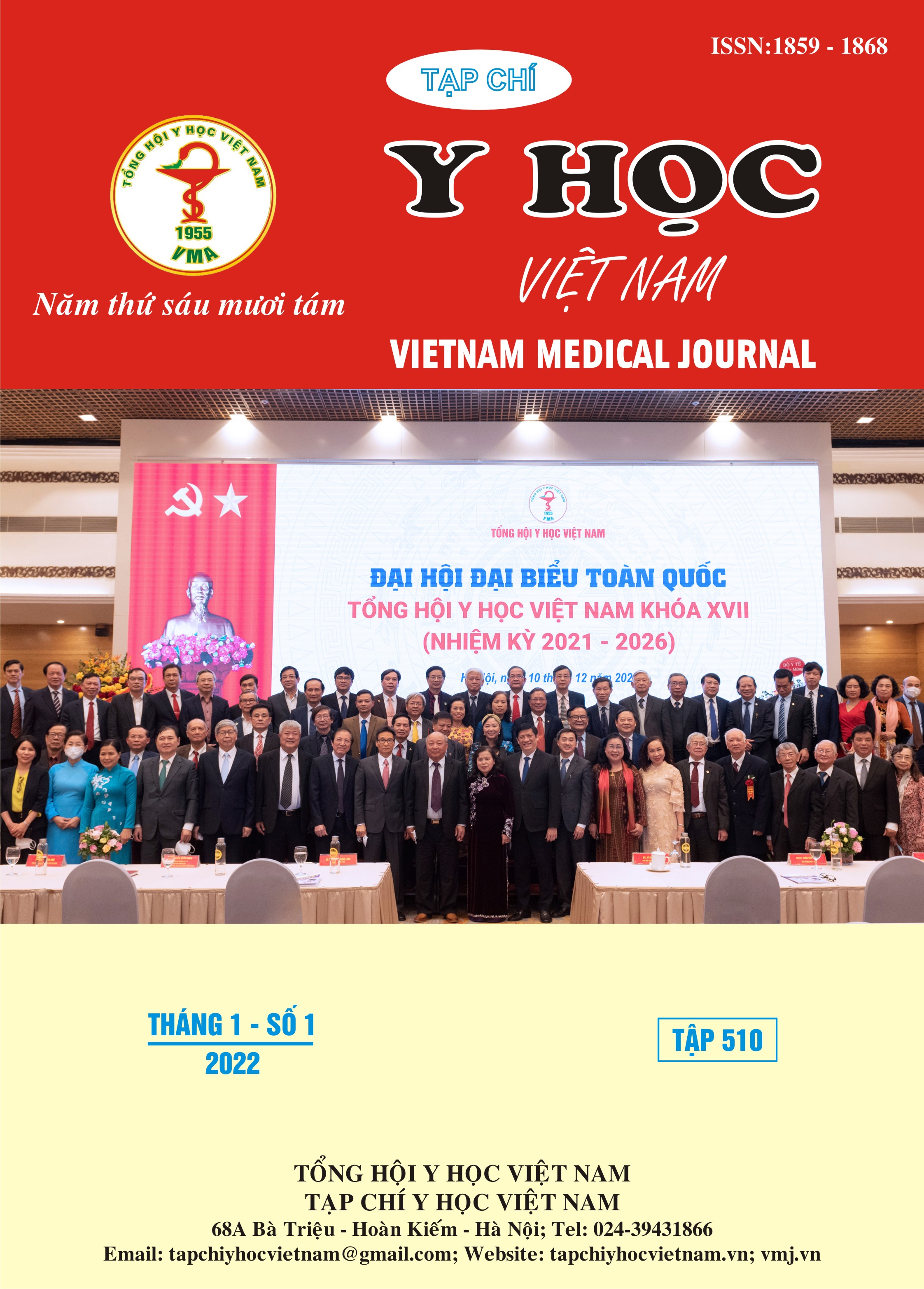DESCRIPTION OF THE EFFECT OF CO2 PUMP ON PULSE, BLOOD PRESSURE ON LAPAROSCOPIC ABDOMINAL SURGERY PATIENTS AT XANH PON GENERAL HOSPITAL IN 2021
Main Article Content
Abstract
Aims: Describe changes in pulse, blood pressure (BP) in patients undergoing laparoscopic abdominal surgery with CO2 pump at Xanh Pon Hospital in 2021. Methods: Observing 40 patients undergoing laparoscopic abdominal surgery with CO2 with pump (pumping rate 2,3±0,36 liters/min, pumping pressure 11,13±0,42 mmHg) at Xanh Pon Hospital in 2021. Patients are monitored before, during the pump and 120 minutes after the CO2 discharge. Evaluation criteria: Change in radial pulse rate, systolic BP (SBP), diastolic BP (DBP), mean BP (MBP). Results: Pulse changed significantly at the times: 8 minutes after CO2 pump (increased 4,26% compared to the time before anesthesia), after CO2 deflation (increase of 2,06%), extubation (increase of 7%). The BP decreased much at the time of induction of anesthesia with a reduction of MBP 19,99%; SBP 20,08%; DBP 19,1%); but after CO2 pump, BP increased more than the time before inflation (10 minutes after CO2 pump increased MBP 5,8%; SBP 7,4%; DBP 4,5%) and remained elevated throughout the surgery. The BP decreased much after induction of anesthesia; after CO2 pump, systolic and diastolic BP tended to decrease more than the time before surgery. The time after deflation, BP decreased compared to the time of surgery (reduced MBP 3,6%; SBP 4,8%; DBP 2,4%). At the time of extubation, blood pressure increased (increase in MBP 5.5%; SBP 5,1%; DBP 6,5%). Conclusion: Pumping CO2 into the peritoneal cavity in patients undergoing laparoscopic abdominal surgery causes significant changes in pulse and blood pressure at some time points (after CO2 pump, after deflation, extubation).
Article Details
Keywords
Laparoscopic abdominal surgery, CO2 pump, Change in pulse/ BP
References
2. Nguyễn Mạnh Hồng và Công Quyết Thắng (2008). “Nghiên cứu Gây mê Hồi sức trong mổ nội soi ổ bụng, bệnh viện Hữu Nghị Hà Nội”.
3. Nguyễn Ngọc Anh và cộng sự (2006). “Gây mê trong mổ nội soi ổ bụng”, Bài giảng Gây mê hồi sức tập II. Nhà xuất bản Y học, tr 311-318.
4. Nguyễn Quốc Kính (2013). “Theo dõi trong mổ nội soi” Gây mê hồi sức cho phẫu thuật nội soi. Nhà xuất bản Giáo dục Việt Nam, tr 48-49.
5. Nguyễn Sỹ Linh (2018). Gây mê cho phẫu thuật nội soi và phẫu thuật Robot, truy cập ngày 20/11/2018, tại https://www.gaymehoisuc. net/2018/10/gay-me-cho-phau-thuat-noi-soi-va-phau.html
6. Trần Bình Giang và cộng sự (2018). “Lịch sử của nội soi và phẫu thuật nội soi”, Phẫu thuật nội soi ổ bụng. Nhà xuất bản Y học, tr 15-47.


